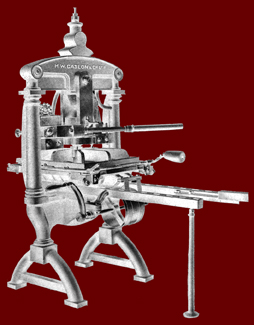|
|
|
|
|
|
|
|
|
PRINTMAKING relief prints and printmaking
PRINTMAKING
|
|
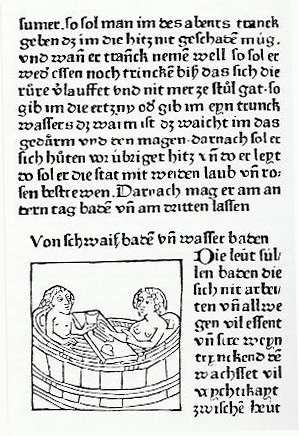 |
|
|
|
|
|
WOODCUTS
Printing from woodcuts was being used in Europe, before the age of the printing press, for printing on cloth. "Block books" were early printed books where both the image and the text were cut into the same piece of wood. This was a laborious process and mistakes in the text would be hard to rectify.
From the early years of books printed by means of moveable type (mid fifteenth century) woodcut illustrations were incorporated within the text.
The example on the left is from Augsburg and the book is usually know as the Augsburg Calendar (Kalender) and it dates from 1481.
|
|
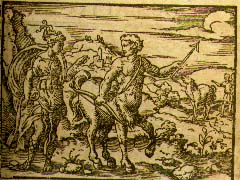 |
|
|
|
Jost Amman - Woodcut illustrations to Ovid's Metamorphoses of 1580
Wood cutting quickly developed through, for example, the work of Albrecht Dürer, into a sophisticated art form. This sixteenth century volume of Ovid, illustrated by Jost Amman, is full of tiny woodcut illustrations that have been finely cut to achieve the effect of both line and tone.
|
|
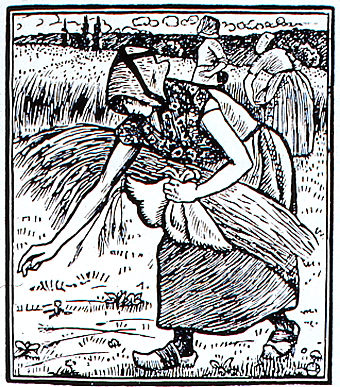 |
|
|
|
Lucien Pisarro (left), a late nineteenth century woodcut.
|
|
WOODCUT
The wood from a fruit tree, such as pear or cherry was traditionally used for a woodcut, the block itself was cut along the "plank" so that the formschneider or woodcutter was cutting along the grain of the wood. This example below was cut in pear wood.
The earliest known European woodcut prints date from the late fourteenth century but prints were being made much earlier than this in China and surrounding countries.
After the introduction of the printing press in Europe the wood was usually prepared so that it was type high so that the image could be printed at the same time as the text.
|
|
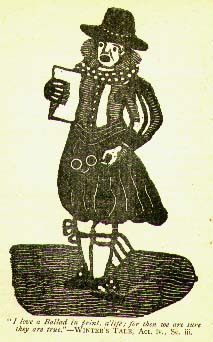 |
|
|
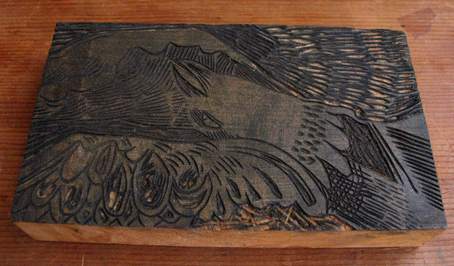 |
|
In the 1880's Joseph Crawhall (above) produced parodies of earlier wood cuts. He illustrated a number of books produced by Field and Tuer at the Leadenhall Press, London.
This example was kindly presented to me by Barri Marks.
|
|
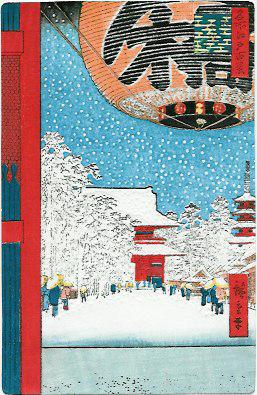 |
|
|
|
|
|
THE WOODCUT IN JAPAN
Hiroshige Utagawa (1797 - 1858)
Publisher Shitaya Uoel; date: 7/1857 size: 24.5 x 36.3) format: oban; series title: "Mwisho Edo Hyakkei" One Hundred Famous Views of Edo; title of this print: "Asakusa Kinryuzan" The Kinryuzan Temple in Asakusa".
The Kinryuzan Asakusa temple as seen from the Kaminari Gate. Inside the temple there was a spiritually important statue of Kannon, the Goddess of mercy. The statue had been rescued from the river Sumida by a fisherman.
|
|
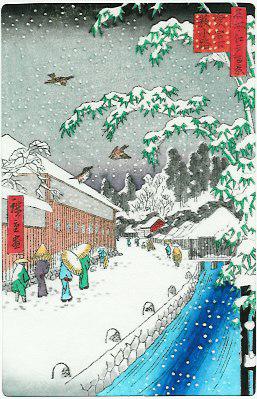 |
|
|
Hiroshige Utagawa (1797 - 1858)
These Hiroshige prints are fine examples of Japanese woodcut prints. Each colour was printed from a separate hand-cut wood block, each of which was then printed one at a time, one printing on top of another. There might be anything from ten to twenty or more printings.
The artist himself (male) did not usually participate in the printmaking process; he produced the designs and a team of skilled female workers cut the blocks and produced the prints.
|
|
|
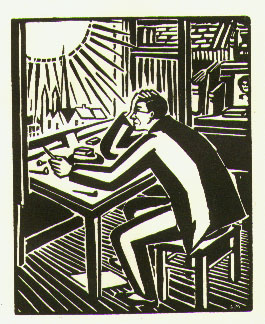 |
|
|
THE TWENTIETH CENTURY
Frans Masereel (1889 - 1972) - Masereel produced several books without words, each containing a large number of small but bold woodcuts. This example was taken from Die Sonne (1927).
|
|
 |
|
|
John Williams - relief print
colour can be employed by using more than one wood block or block of lino or a combination of the two. Textures can also be added by using wood working glue and marks can be inscribed into the surface in order to create textures.
|
|
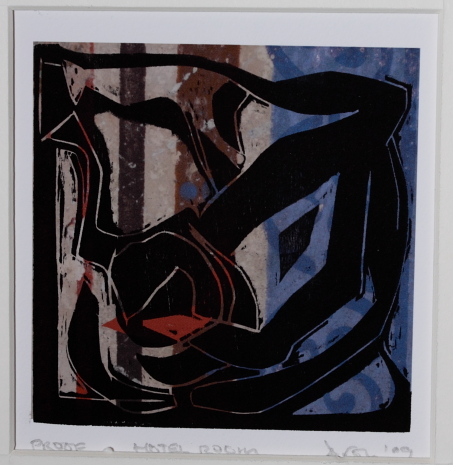 |
|
|
ARVON WELLEN
Hotel Room: Mixed woodcut and digital print; 2009; 18 x 18cm
|
|
|
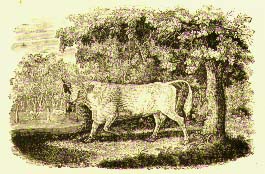 |
|
THOMAS BEWICK AND WOOD ENGRAVING
Thomas Bewick (1753 - 1828) - "the bull" Wood engraving
Bewick has often been given the accolade of "inventing" wood engraving. This is not true, as wood engravings can be found in illustrated books that predate Bewick. However, his great skill with the medium promoted wood engraving to the extent that he became a famous "celebrity" and wood engraving went on to become the principal means of reproducing illustration and drawing in the 19th century.
|
|
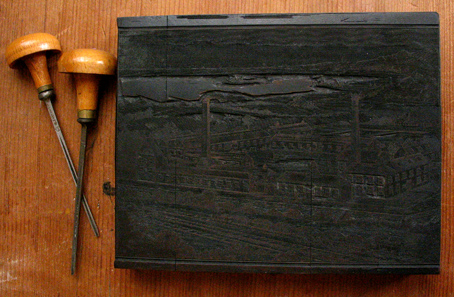 |
WOOD ENGRAVING
The main difference between a wood engraving and the wood cut is that where the latter was cut on the "plank" the former was cut on the end grain. The wood needed to be harder and box wood was generally used. Timber was cut across the trunk forming circles of wood that would be left to mature in neatly stacked piles. It was, therefore difficult to find wood of sufficient size to make blocks of even modest dimensions. This problem was resolved by jointing and fitting together several small blocks in order to create a larger one. You can see the size of these smaller blocks where they are beginning to separate in the example on the left. This particular block was very kindly given to me by Mr. Lawrence (of T N Lawrence) at a time when you had to prove a sound interest in the subject in order to be let in to the shop.
In order to produce the fine lines and tones of wood engraving engraving tools, similar to those used in metal engraving, were used to engrave the surface of this hard wood, rather than the gouges used for wood cutting.
|
|
|
|
Updated 25 / 10 / 2010
|
|
|
|
|
|
|
|
|
|
|
|
|
|
|
|
|
|
|
|
|
|
